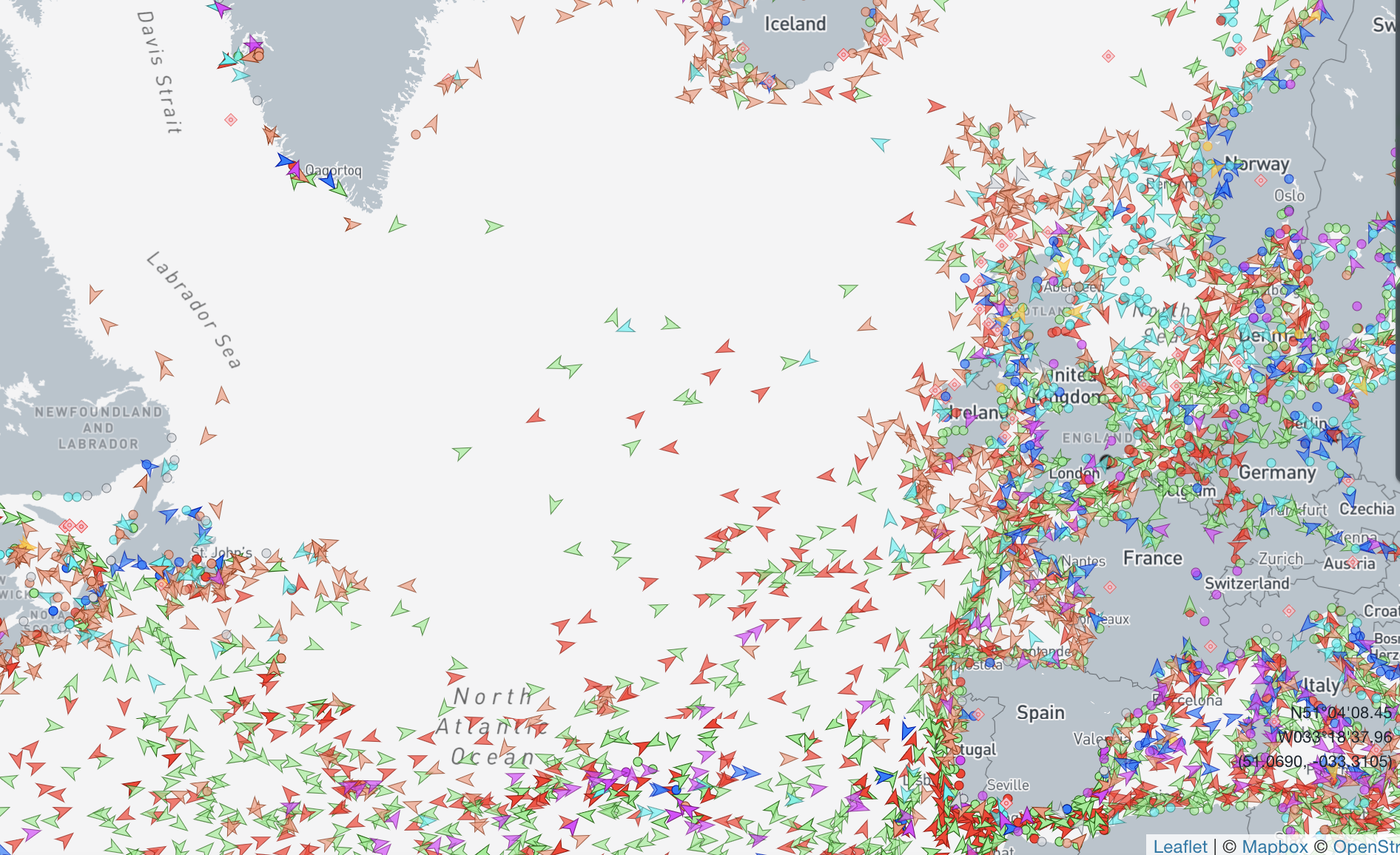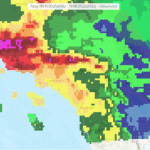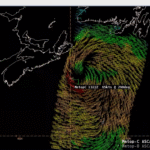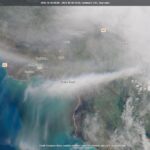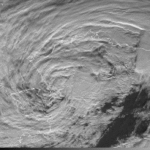A late-season intense extratropical cyclone developed across the Northwest Atlantic after a frontal system pushed off the New England Coast over the weekend. The extratropical cyclone reached storm-force, meaning its sustained winds were between 48 and 63 kts (roughly 55 to 72 mph). GOES-East (GOES-19 replaced GOES-16 as the operational GOES-East satellite on April 4) Air Mass RGB imagery captured the intensification of the low pressure as it moved eastward and pushed off the coast of Newfoundland, from 0600 UTC 20 April to 0600 UTC 21 April 2025. Throughout the 24-hour time period, deeper oranges and reds can be seen enveloping the area of spin, suggesting an upstream troposphere fold helped provide high-levels of potential vorticity (PV) to fuel the intensification. From 0600 UTC 20 April to 0600 UTC 21 April 2025, the minimum central pressure of the system dropped from 998 to 982 mb, as winds ramped up from sub-gale to storm-force.
Figure 1: GOES-East Air Mass RGB imagery from 0600 UTC 20 April to 0600 UTC 21 April 2025. From CIRA Slider

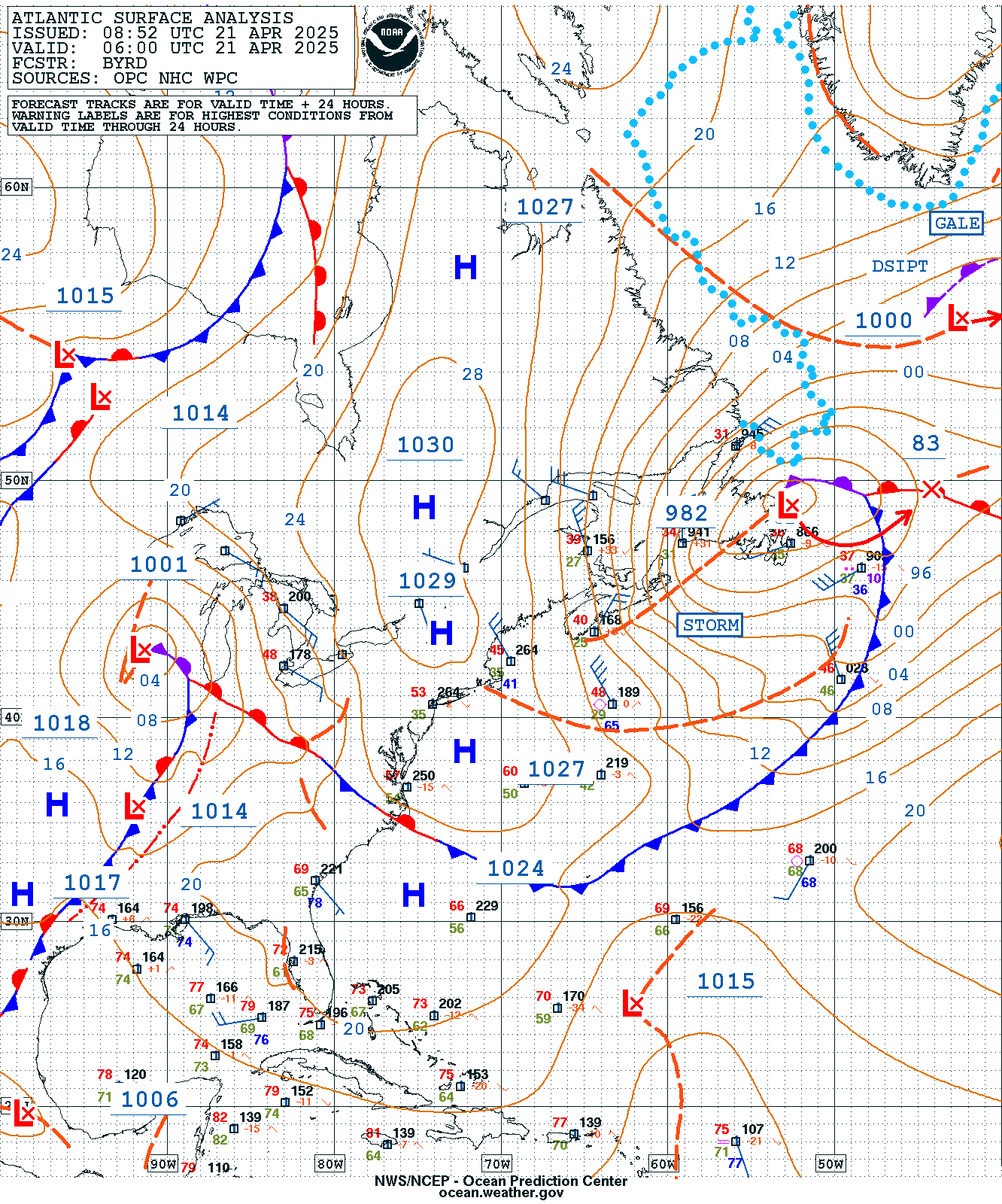
Figure 2: The National Weather Service (NWS) Ocean Prediction Center (OPC) Atlantic Surface Analysis valid at 0600 UTC 20 April (left) and 0600 UTC 21 April 2025 (right).
Well to the south of Newfoundland, a RadarSat Constellation Mission -1 (RCM-1) Synthetic Aperture Radar (SAR RCM) pass at ~1000 UTC 21 April 2025 observed strong northwest winds behind the cold front, with sustained winds around 40 kts. SAR winds provide a much higher spatial resolution of 500-m in comparison to scatterometers (12.5 km).

After 1200 UTC 21 April 2025, the low pressure had slightly weakened back down to gale-force. Metop-C ASCAT scatterometer passes at ~1257 and ~1435 UTC observed ocean surface winds around 40 kts on the system’s southern flank, with a small area of gales also developing along the occluded front north of the circulation.
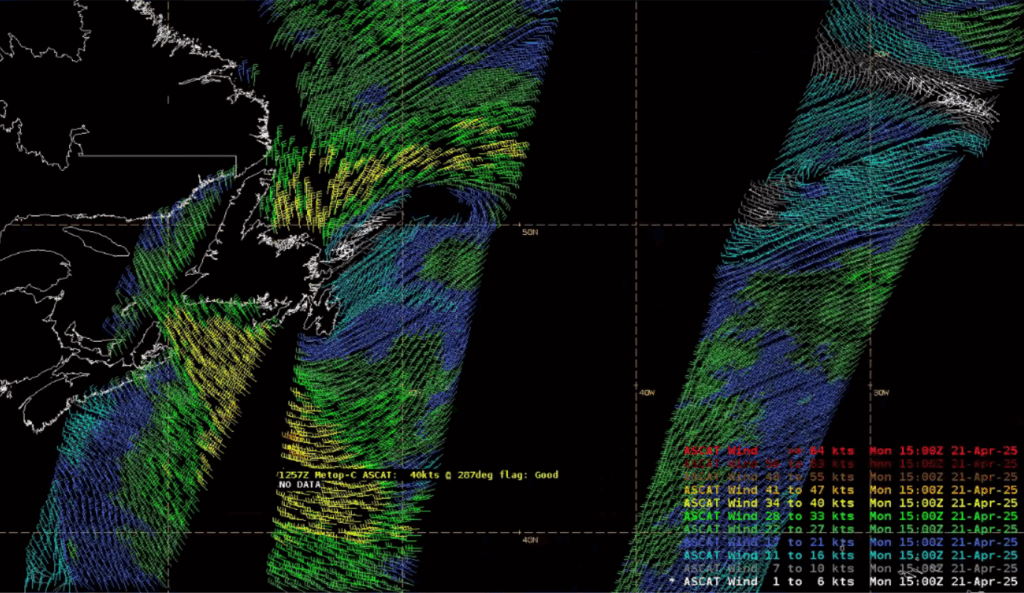
The OceanSat-3 Scatterometer (OSCAT-3) was recently made available in AWIPS workstations for OPC forecasters. Following a couple of hours behind ASCAT, the wide swath provided an additional look at the wind field’s evolution. The OSCAT-3 pass at ~1542 UTC 21 April 2025 picked up on an expansion and strengthening of gale-force winds along the occluded front. A few wind observations even reached storm-force, but the observations were isolated and in areas of convection. OSCAT-3 wind retrievals can be overestimated and compromised by rain contamination as the Ku-band scatterometer has a shorter wavelength compared to ASCAT and can result in increased backscatter. Overlaying the OSCAT-3 pass on GOES-E GeoColor imagery confirmed the erroneous wind values located in area of thick cloud cover.

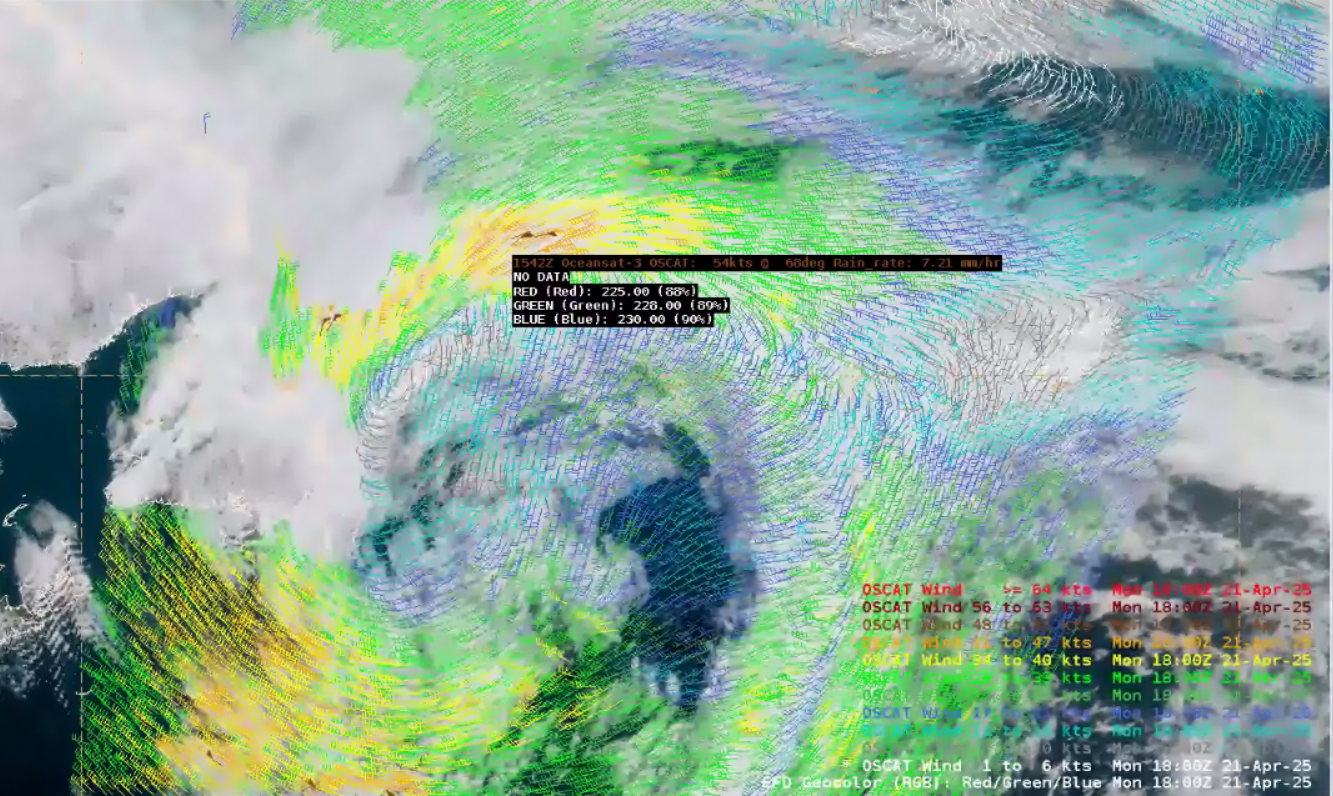
Figure 5: OSCAT-3 pass valid at ~1542 UTC 21 April 2024 (left), and the pass overlaid with GOES-East Geocolor imagery (right). Note the 54 kt wind value is found in a location of thick cloud cover, and an observed Rain Rate of 7.21 mm/hr when sampling in AWIPS. This image was exported from AWIPS.
GCOM-W/AMSR2 microwave emission-derived ocean surface winds were also available from an hour prior to confirm the expansion of the gale-force winds on the northern side of the extratropical cyclone. Estimated wind speeds also reached 44 kts, supporting the strengthening seen in OSCAT-3, but not yet at storm-force.
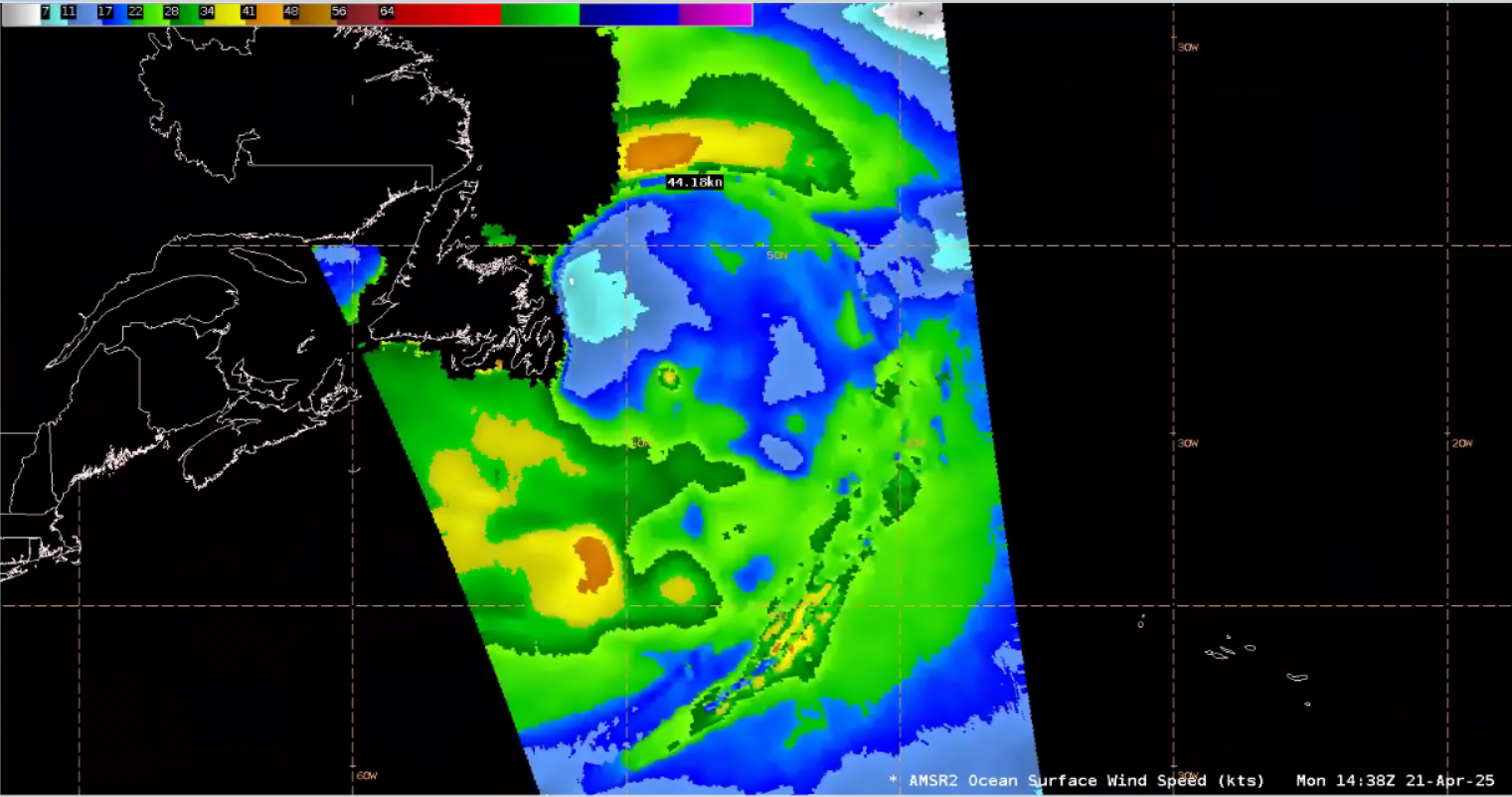
The strong winds across the Northwest Atlantic drove large wave heights to develop. Significant Wave Heights observed by the Sentinel-3b/SRAL altimeter around ~1400 UTC 21 April 2025 reached 6.5 meters, or in excess of 21 feet. The NWS OPC North Atlantic 72 Hour Wind & Wave Forecast provided ample lead time of the Significant Wave Heights (average height of the highest one-third of the waves) in excess of 6 meters south of Newfoundland.
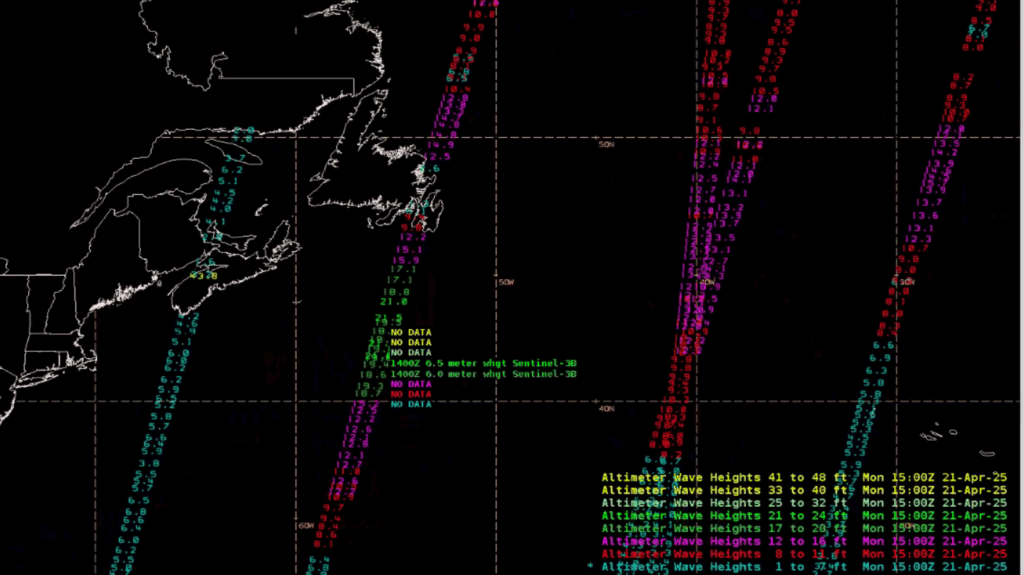
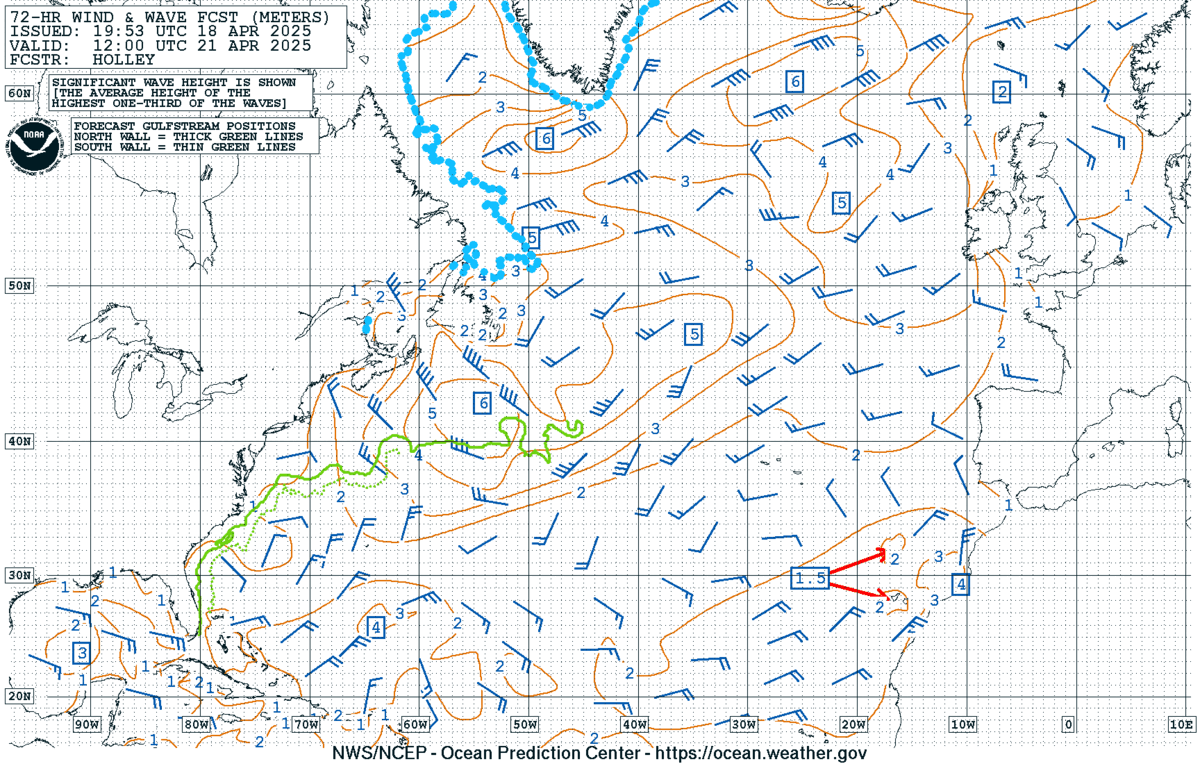
Sea Spray was an additional hazard observed off the coast of Newfoundland on 21 April 2025. GOES-East Sea Spray RGB imagery from 1600 to 1800 UTC 21 April 2025 showed the sea spray (medium cyan to gray) developing into cloud streets downstream northeast of Newfoundland. JPSS/VIIRS provided a higher resolution view of the sea spray at ~1755 UTC 21 April 2025. Note that the Shortwave Infrared Band saturated the ‘Red’ part of the RGB composite due to sun glint, causing the scene to appear quite red overall.
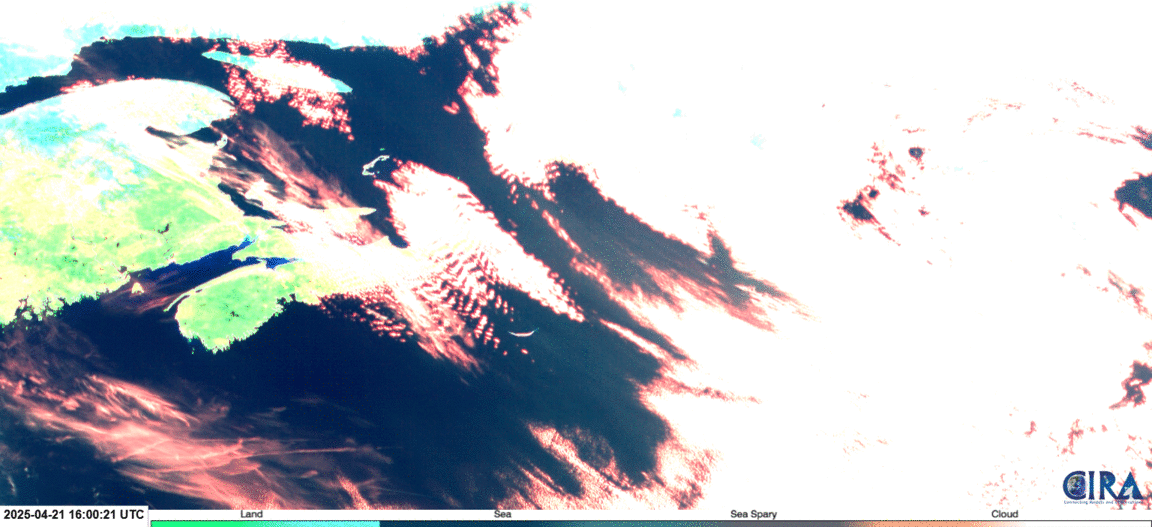

The system regained storm-force strength as it pushed northeastward on Tuesday. OSCAT-3 showed the enhancement of the Greenland tip jet, with a narrow strip of winds near 50 kts.
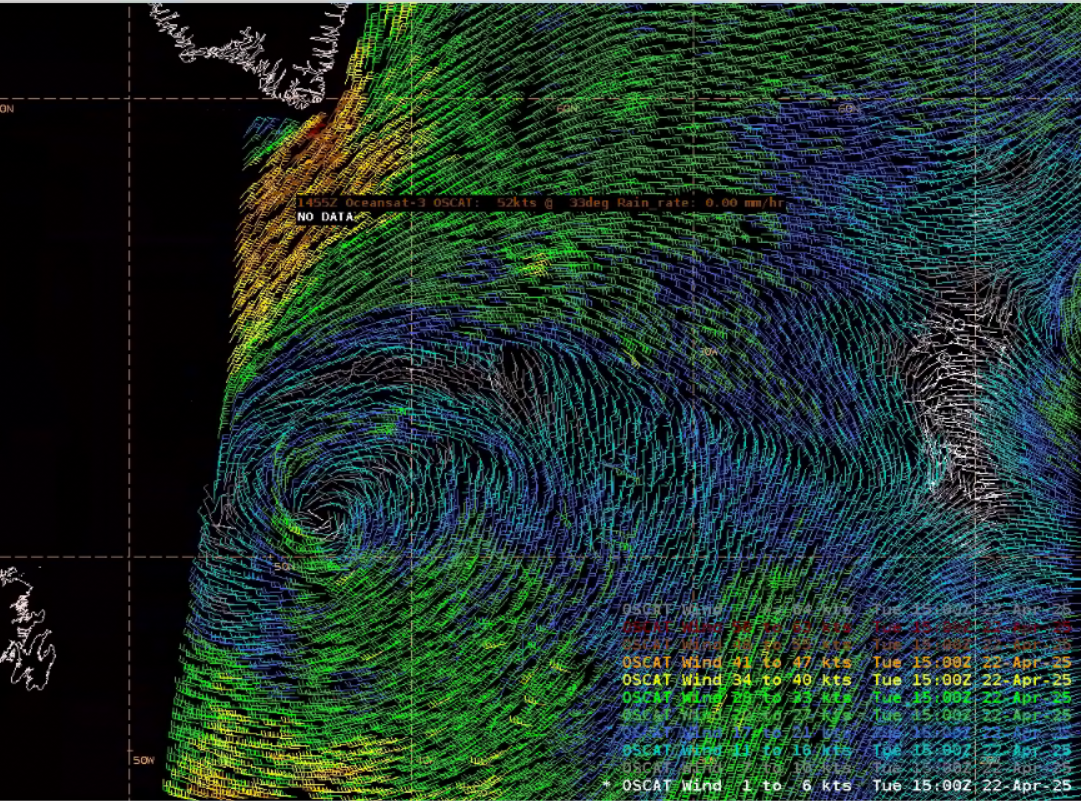
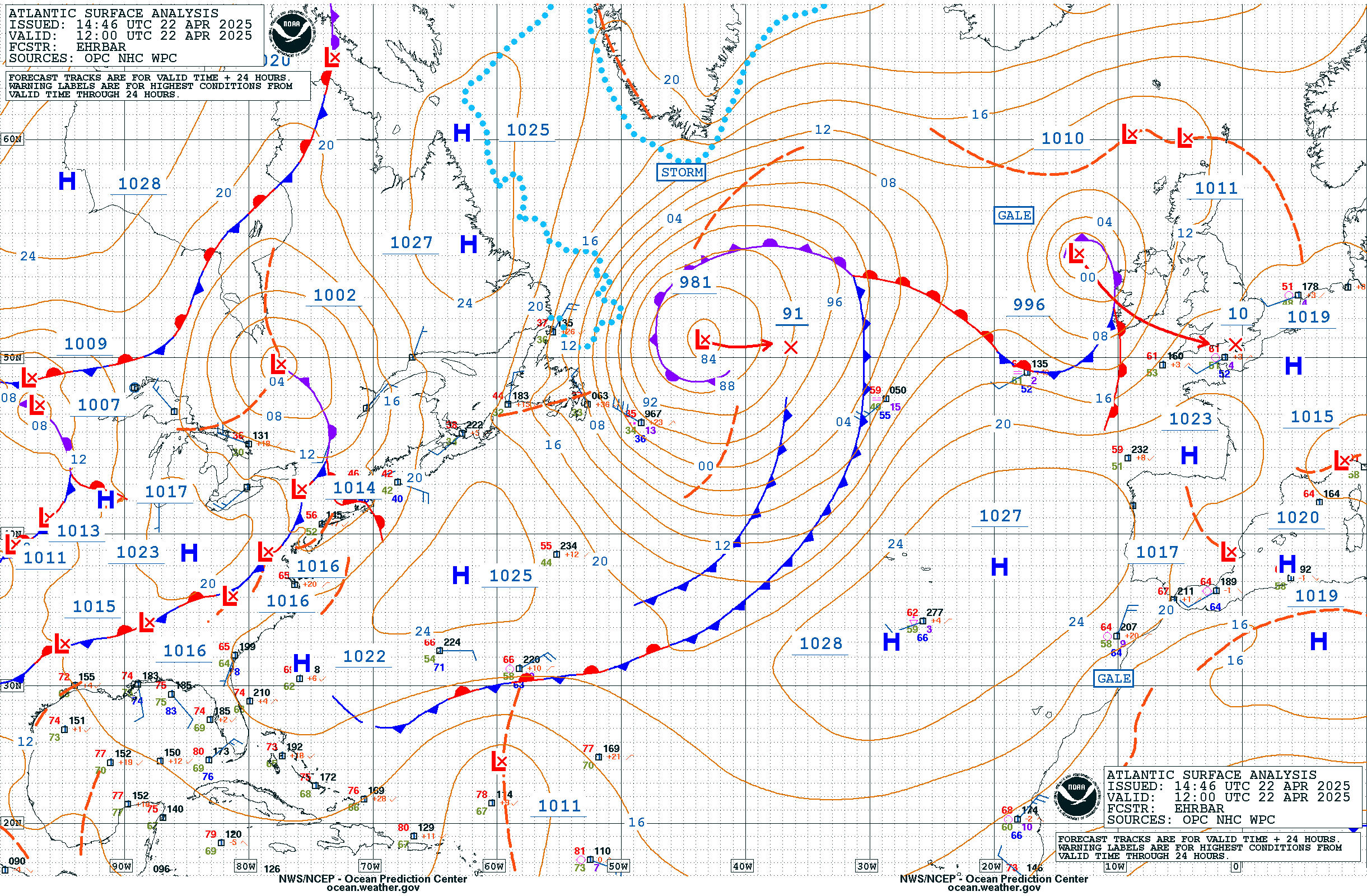
The system caused many vessels to avoid the far northern Atlantic on the morning of 23 April 2025, with the latest NWS OPC Atlantic Surface Analysis still showing storm-force winds south of Greenland.
